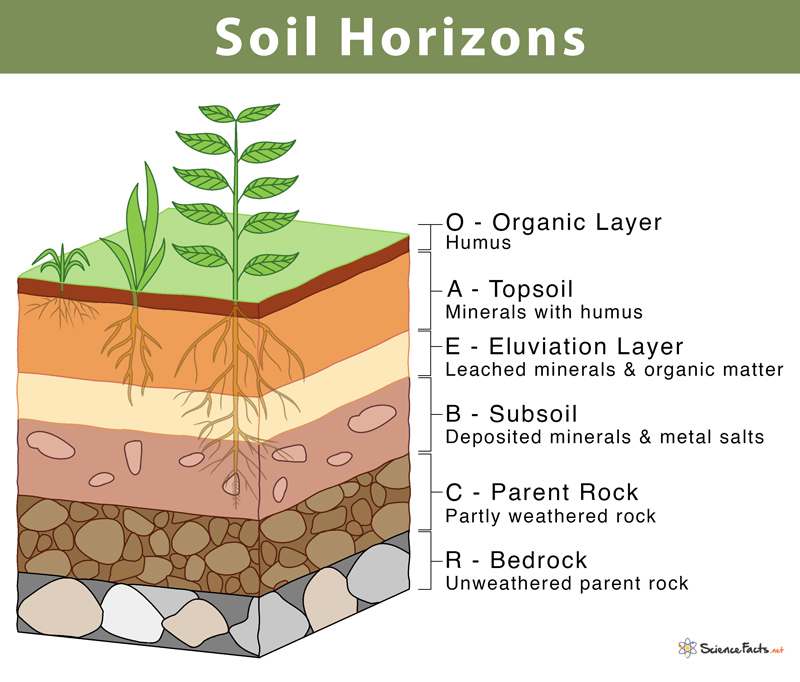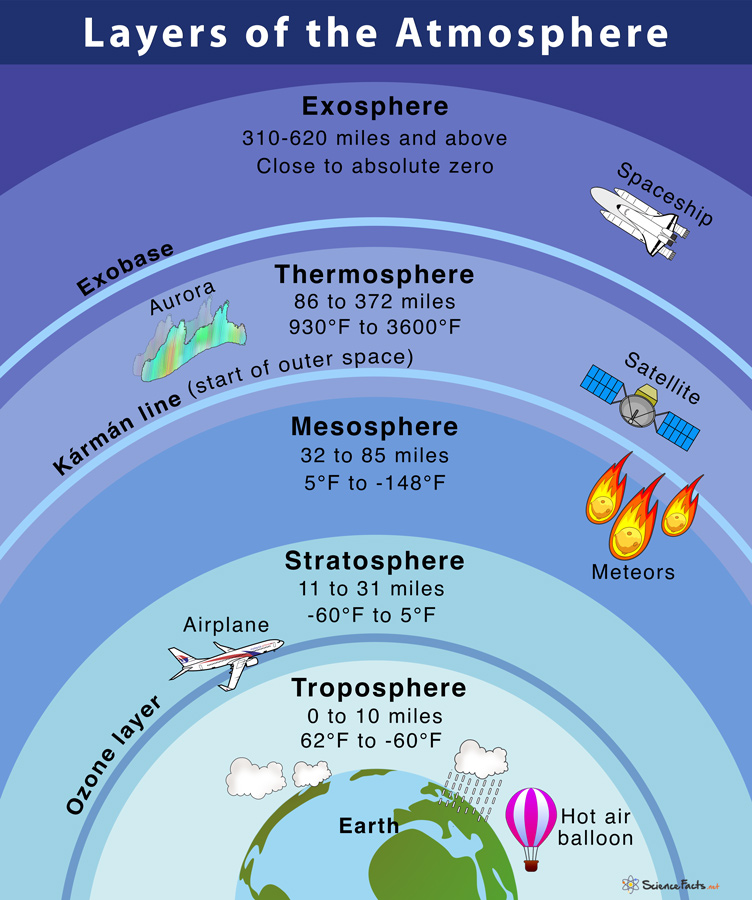Soil Horizons
The soil is the topmost layer of the earth’s crust consisting of air, water, inorganic minerals (rock, sand, clay, and slit), and organic matter (dead plants and animals). It forms the source of food for plants. It provides shelter for many animals such as insects, centipedes, burrowing animals, microorganisms, and many others. It is thus also called the ‘skin of the earth.’
There are different soil types, each having unique characteristics like color, texture, structure, thickness, mineral content, and organic matter.
What is Soil Horizon?
During its formation, the soil is arranged in different layers. Each of these layers is called a soil horizon, and when these layers are arranged sequentially one above the other, it forms the soil profile. In other words, the soil profile is the vertical section of the soil exposed by a soil pit.
There is the significant importance of soil horizon in soil science. It allows one to understand the several processes that play a role in soil development and determine the different soil types. It also forms the basis for soil classification.
How Many Horizons are there in Soil?
There are six different layers or horizons that make up a mature soil profile. These layers or horizons are represented by alphabets O, A, E, C, B, and R. Immature soils lack some of these layers.
1) O Horizon – (Organic Layer)
‘O’ is for organic. This layer is the uppermost layer of the soil rich in organic matter, such as the remains of plants and dead animals. Due to high organic content, this layer is typically black brown or dark brown. The O horizon is thin in some soil, thick in some others, or absent in the rest.
2) A Horizon – (Topsoil)
Found below the O horizon, it has a dark brown color as it contains the maximum organic matter of the soil. The A horizon or topsoil is thus also called the humus layer. The topsoil is the region of intense biological activity and has the most nutrients. Insects, earthworms, centipedes, bacteria, fungi, and other animals are found inside this layer.
The humus makes the topsoil highly porous, allowing it to hold air and moisture necessary for seed germination. Here, the plants stretch their roots deep down, allowing it to hold the topsoil together. In this layer, minerals and clay particles may dissolve in the fresh water and get carried to lower layers as water percolates down the soil.
3) E Horizon – (Eluviation Layer)
This layer consists of nutrients leached from O and A horizons and is thus called the eluviations layer. Leaching of clay, minerals, and organic matter leaves this layer with a high concentration of sand, slit particles, quartz, and other resistant materials. E horizon is absent in most soils but is more common in forested areas.
4) B Horizon – (Subsoil)
Mostly found below the topsoil is another layer called the subsoil or horizon B. It is lighter in color than the topsoil due to lower humus content. However, it is comparatively more rigid and compact than the topsoil. This layer has less organic content but is rich in minerals that are leached down from the topsoil. The subsoil is the region of deposition of certain minerals and salts of certain metals such as iron oxides, aluminum oxides, and calcium carbonate in large proportion.
This layer holds enough water due to its clayey nature. Farmers often mix topsoil and subsoil while plowing their fields.
5) C Horizon – (Parent Rock)
Also known as regolith or saprolite, it lies just below the subsoil. It is called the parent rock because all the upper layers developed from this layer. C horizon is devoid of any organic matter and is made of broken-up bedrocks, making it hard. Plant roots do not penetrate this layer. This layer is a transition between the inner layer of earth and the upper A and B horizons.
6) R Horizon – (Bedrock)
Found beneath all the layers, it consists of un-weathered igneous, sedimentary, and metamorphic rocks. It is highly compact. Granite, basalt, quartzite, sandstone, and limestone make up the bedrock.
How do the Different Soil Horizons Develop?
The formation of soil is a continuous process occurring still today from the time of the earth’s inception.
- The process starts when big rocks are broken down into smaller ones by wind and rain. This process is known as weathering. The two types of weathering processes are physical and chemical weathering. Several natural forces such as wind, water, sunlight act as physical agents. In contrast, water, oxygen, and carbon dioxide act as chemical agents of weathering.
- These rocks get further broken down into finer particles such as sand, silt, and gravel, and the process continues.
- This process continues for thousands of years to form just a 1 cm layer of soil. These fine particles ultimately form the topmost layer of the soil.
FAQs
Ans. Five factors that cause soils and their horizons to differ from one another are parent material, weather or climate, topography, biological factors such as the type of plants and animals living on the soil, and time.
Ans. The decomposition of dead organic remains of plants and animals over time by microorganisms such as bacteria and fungi help soils become dark.
Ans. The A Horizon makes up the topsoil.
Ans. The A Horizon or the topsoil is best for growing plants.
Ans. The O horizon contains the most humus among all other layers of soil.
-
References
Article was last reviewed on Friday, February 17, 2023






Very useful for one of my school assignments, thank you!